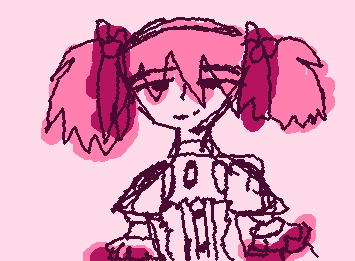Understanding Pixel Art Animation
Pixel art animation follows the same principles as traditional animation but with unique constraints. Every pixel matters, and each frame must be carefully crafted to maintain consistency while creating fluid motion. The key is working within limitations while maximizing expressiveness.
Character Design Basics for Wiggles Paint
Before animating, you need a solid character design. Keep these principles in mind for your Wiggle Paint and WigglyPaint creations:
- Simple shapes: Use basic geometric forms that can be easily animated
- Clear silhouette: Your character should be recognizable even in silhouette form
- Limited palette: Stick to 2-4 colors per sprite for consistency
- Expressive features: Focus on eyes, mouth, and body language
The Animation Process
1. Planning Your Frames
Start by planning key poses. For a simple walk cycle, you might need 4-8 frames. Sketch these out first before committing to pixel art.
2. Creating the Base Sprite
Design your character in a neutral standing pose. This will be your reference frame. Pay attention to proportions and ensure everything is properly aligned.
3. Adding Movement
Animation is all about change. Each frame should show progression. For a walk cycle: - Frame 1: Standing pose - Frame 2: Right leg forward, left arm forward - Frame 3: Opposite pose - Frame 4: Return to standing (or continue the cycle)
4. Refining Details
Once basic movement is established, add secondary animations: hair bounce, clothing sway, facial expressions. These small details bring characters to life.
Common Animation Types
Walk Cycles
The most fundamental animation. A good walk cycle tells you everything about a character's personality. Are they confident, timid, energetic, or tired?
Idle Animations
Characters shouldn't be completely still when not moving. Small idle animations (breathing, shifting weight, looking around) make characters feel alive.
Attack/Action Animations
Quick, impactful animations that need to read clearly. Use anticipation (wind-up) and follow-through for more impact.
Technical Tips for Pixel Animation
Frame Rate
Pixel art typically works best at lower frame rates (8-12 FPS for retro feel, 12-24 FPS for smoother animation). Test different rates to see what works for your style.
Consistency
Keep pixel consistency across frames. Avoid "pixel shifting" where pixels jump around inconsistently. Use onion skinning tools if available.
Color Palette
Maintain the same color palette across all frames. This is crucial for professional-looking animations.
Common Mistakes to Avoid
- Inconsistent outlines: Keep line weights consistent across frames
- Too much detail: Pixel art benefits from simplicity
- Poor timing: Animation should flow naturally
- Missing frames: Don't skip important in-between poses
Tools and Resources
While specialized tools exist, you can create excellent pixel art animations with basic drawing programs. WigglyPaint offers animated brushes perfect for pixel art, and the web-based nature means no software installation required.
Putting It All Together
Great pixel art animation combines technical skill with creative expression. Start simple, master the basics, and gradually add complexity. Remember: the best pixel animations tell a story, even if it's just a character walking across the screen.
Next Steps
Ready to start animating? Begin with a simple character and a basic walk cycle. Once you master that, explore more complex animations. The pixel art community is incredibly supportive, and there's always something new to learn.
Start Creating Today
Join thousands of artists creating amazing pixel art animations with WigglyPaint. It's free, it's fun, and you can start right now!
Try WigglyPaint for Free →